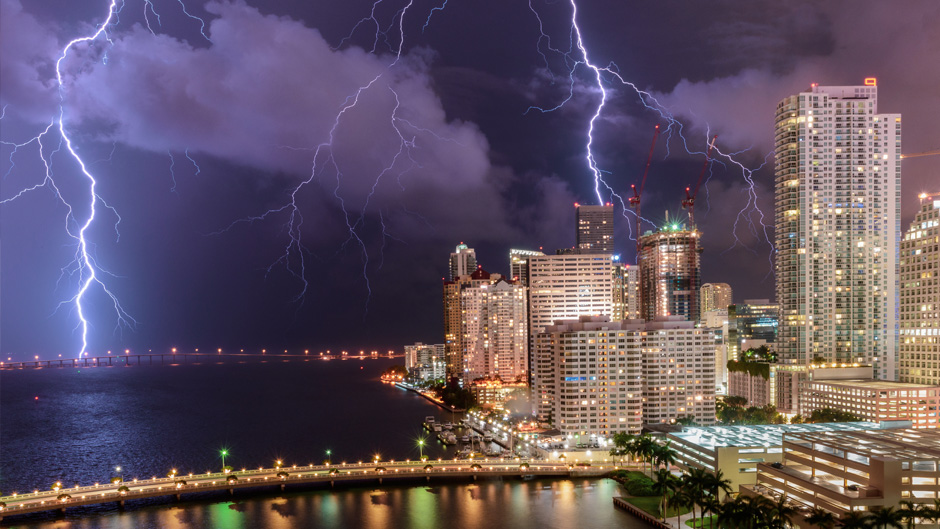Florida is the lightning capital of the United States, home to the greatest lightning density and frequency of thunderstorms, especially in the summer.
Nearly 1.2 million lightning strikes hit Florida in a year, according to a study by Vaisala, a Finnish company that manufactures and markets products and services for environmental and industrial measurement.
Although about 40 million lightning strikes hit the ground in the U.S. each year, the odds of being struck are low. From 2006 to 2021, there were 444 lightning strike deaths in the U.S., according to the Centers for Disease Control and Prevention.
Being aware of the dangers of lightning is important especially as we engage in summertime outdoor activities, experts say.
Brian Mapes, a professor in the Department of Atmospheric Sciences at the University of Miami Rosenstiel School of Marine, Atmospheric, and Earth Science, explained more about this atmospheric phenomenon and provided guidance as to how one can safeguard against lightning strikes.
What is lightning?
Mapes: Lightning is an electrical flow of charge through a channel of superheated air. Since that flow of charge is what heats the air in the first place, it’s a runaway process like an explosion. Boom! Thunder is the acoustic result of that electrical heat-explosion.
Most lightning occurs up in the air (cloud to cloud), but some bolts are cloud to ground. Most cloud-to-ground lightning is negatively charged, but occasionally there are positive strikes, which tend to be much more powerful. These super-strong positive strokes can occur many miles from the cloud that generated them: A bolt from the blue! Rare, but extra dangerous.
Why does Florida get hit so often with lightning?
Mapes: Because of our strong sunshine, which heats air near the ground, and the availability of abundant moisture, Florida has a lot of thunderstorms, especially on summer afternoons.
The electrical flow of charge in lightning occurs in order to compensate for an airborne or fluid flow of charge which separates negative from positive charge. This separation process occurs in vigorous updrafts (as warm air rises), which create static electricity by rubbing or scraping particles of ice and water against each other. The positively and negatively charged particles can then be carried many miles apart, as the updraft lofts the small light particles to high altitudes, and the bigger heavier particles fall.
What is the safest way to protect ourselves from lightning?
Mapes: I couldn’t possibly say anything better or different than the National Weather Service. The report says in part: “There is no safe place outside when thunderstorms are in the area. If you hear thunder, you are likely within striking distance of the storm.”
Just remember, when thunder roars, go indoors. Too many people wait far too long to get to a safe place when thunderstorms approach. Unfortunately, these delayed actions lead to many of the lightning deaths and injuries in the U.S.
The National Weather Service website offers lots of tools to teach lightning safety.
Is it a superstition that we should not shower or take a bath while there is thunder and lightning?
Mapes: The truth is that, yes, if lightning strikes metal plumbing, the electric current can be conducted into the water and hurt someone. A few cases have been documented, although very rarely. Snopes.com addresses the claim and provides information on what is true and what’s false.
Strictly speaking, the National Weather Service guidance says: “Avoid plumbing. Do not wash your hands, take a shower, or wash dishes. Don’t touch electrical equipment such as computers, which is a nice excuse to take a break!”
Of course, they only mean wired computers, not mobile devices communicating on Wi-Fi.
Is it true that we are safe inside a car? Why?
Mapes: Well, safe is a relative term. But yes, a metal box will help conduct electricity around your body, rather than through it. View an amazing video of a scary case that occurred recently in Tampa. Although the truck was destroyed by the lightning, no one was injured in the incident.

